|
By Jenny Kaste, TeachSDGs Ambassador
Recently I was at a board meeting of a local nonprofit with which I am involved. We were discussing an upcoming networking event, which all board members were expected to attend to rub elbows and make connections. Without thinking, I rolled my eyes and sighed, “I just don’t enjoy talking to adults.” A bit surprised by my own outburst, I tried to laugh it off like a joke, but this offhanded remark has stuck with me. Every single day that I’m at school, a person says something that inspires me, makes me laugh, ignites my creativity, or touches my heart. Even on bad days, when lessons flop and technology fails, I find joy in the minds and hearts of the people I choose to surround myself with. The fact that these people are under 16 years old doesn’t matter. Well, actually I think it does. When I talk to adults I don’t hear new ideas, creative ways to look at the world or an optimistic hope for the future. I don’t hear a desire, or even a willingness, to learn and take in new ideas. I was right at that board meeting. I don’t prefer talking to adults. I have recently started using the United Nations 17 Sustainable Development Goals as a part of my instruction. As I introduced this checklist to make a better world to a new group of change makers, I was struck by the contrast between how they received the ideas and the way adults I talk to about them respond. The 5th grade people immediately took responsibility for these Goals. They immediately asked the big questions and were filled with a million ideas for action. No one said “that’s not possible.” There was no talk of politics, no me-first ideas. The learners in my room didn't talk about laws or costs. They used words like fair and right. The Goals didn’t divide my classroom they united it. #StudentVoice is trending and youth activists are on the cover of magazines. It’s easier today than ever to give the young people I work with an authentic audience for their ideas and passion. Technology paves the ground for them to solve problems and lead revolutions. It’s an exciting time to be an educator. I don’t see myself as a gate keeper of their voices. I think of it as an honor and a privilege to be a part of their conversation. I hope I can influence them, help them edit their message and hone their communication skills. I want my instruction to give them what they need to create their solutions. I model how to connect globally. I encourage them to create opportunities for themselves. I teach because I believe this world can be a more equitable, sustainable, and tolerant place. And if I believe the world is going to be a better place, then I should spend my time talking to people who are actually going to change it.  By Tobias Simonsen, #TeachSDGs Ambassador In August, the board of KFUM-Spejderne I Danmark agreed on a new strategy for achieving the SDGs, with special focus on Goal 12 and 13. Scouts in Denmark has got a new strategy for environmental sustainability. It all started in the spring, with the idea of enhancing the SDGs, but without prioritizing specific goals. It seemed impossible to work with 17 Goals at the same time. Though the educational programs within scouting accumulated are enhancing most goals, we needed a joint direction for working structural with the SDGs. In the end, Goal 12 about Responsible Consumption and Production and Goal 13 about Climate Action where chosen. We saw these goals tackled in many ways within the organization, but without knowledge sharing they were only in fragmented places in the organization. The process of agreeing on a structure and method for the strategy took several months. On the one hand, we want to be the first Co2 neutral youth organization in Denmark, but on the other hand we want to tackle the low hanging fruits--the ones that we can do something about ASAP. We knew the strategy should not just be something the board decided; we had many inputs and ideas from different places in the organization. We felt this was crucial to move forward. The compromise was to make an approach where new actions every half year would be decided as outcome of sustainability dialogue meetings; where everybody within the organization is invited to discuss environmental sustainability. The agenda of the dialogue meetings will change from meeting to meeting, but the outcome of the dialogue meetings will be the foundation for the next half year’s actions. As we say, “we don’t know all, but together we know more." Our first environmental sustainability dialogue meeting will be executed in the end of the month, and I can’t wait to discuss the topic with all the scouts having dreams and desires for our joint future. At the agreement of the strategy, the following seven actions were chosen as our starting point:
The approach means many tasks and loads of discussions, but I am confident, that it is a great way to ensure joint direction. And let’s see, we are still dreaming of becoming the first Co2 neutral youth organization in Denmark – and dreams come true if you work hard. So what are we waiting for? PHOTO: KarloGraphy https://www.facebook.com/karlographier/ By Monica Joshi Gamification is a method of incorporating game design elements in non-game contexts like classroom teaching and management. Through this project, we have tried to understand the topic LIFE ON LAND across different subject domains while incorporating challenges/missions in different parts of lesson design and assessment using suitable Microsoft products. Task completion and student learning has been rewarded with badges/points that were used by students to move over a leader board and exchanged for tangible desirables. Hence, the project demonstrates how games can be a powerful way to stimulate engagement and can play a significant role in experiential learning and reinforcement of content with effective classroom management. Learning Objective:
Project Outline: The purpose of this project is to use gamification in various subjects to understand the topic LIFE ON LAND. The project covers how different Microsoft (MS) tools can be used in gamification to engage students with the Introduction, Development, Summation, Evaluation and Reflection of the Lesson. The concepts covered included: Geography:
History: Students explore evolution of mankind. Evolution of Apes to Homosapiens and the settled life of the human beings. They have used POWERPOINT RECORDER to create a Flipped Lesson. Also they created a Minecraft World to Introduce and Develop the lesson Egyptian Civilization. Science: To explore the Respiratory System of the human body, various tools were used in different parts of lesson to make it more engaging and to give students an experiential learning opportunity. A complete lesson through Sway was created including various tools like Minecraft, Kahoot, Flip Grid and Microsoft Forms. For evaluation of Respiratory system, Microsoft Form and Kahoot are used. Microsoft form for Respiratory System You can play this quiz at home by downloading the KAHOOT APP. Your code/pin for playing the quiz on KAHOOT: KAHOOT PIN:- 0825949 For feedback and reflection FlipGrid is used to amplify the student voice. https://flipgrid.com/k5doayt Mathematics: Students to show learning with the help of graphs, charts in EXCEL/ POWERPOINT/ PAINT BRUSH/ ONLINE MAPS/ MINECRAFT for calculating perimeter and area. The students marked the places, find the distance between them and further they will calculate the area and perimeter of the specific region. By using Ms paint, grid lines can be created and animals face or entire body's area can be calculated. Summing up of the lesson was done using the Mind Map English / Hindi: Children have composed a poem and shared their views about supporting Goal No 15 Life on Land and recorded it on FLIPGRID, PADLET and MINECRAFT. Digital Storytelling is done using SWAY. Art: Children have prepared e-poster using 3-D Paint and MS-WORD depicting the theme SDG 15 LIFE ON LAND. Physical Education: A student created Minecraft world to develop a topic of good health in relation with indoor and outdoor sports. The created Minecraft world can also be used to assess the knowledge of students about the indoor and outdoor sports. Everyday Sports: A Precursor to Good Health, Quality Education and Peace Use Of AI across Subjects:- AI can be used in any subject for PBL through these simple steps.
Learning Outcomes:
Microsoft Tools Used:
How many students were impacted? Students from K-12 How can it be scaled & replicated? Scalability of the Project: Gamification is a method of incorporating game design elements in non-game contexts like classroom teaching and management. A teacher can incorporate challenges and missions in different parts of the lesson. Rewards, task completion and student learning with badges or points can be used to move over a leader board. It will be tangible for any classroom for desirable outcomes. Thus, this methodology allows for complete freedom in terms of:
What are the learnings and challenges? Learnings:
Challenges:  I am Monica Joshi, IT Head, Sat Paul Mittal School, Ludhiana, Punjab, India. I am an SDG enthusiast and so do are my students, and it inspire me to take this as a challenge and currently I work to promote SDG’s through projects for my students, teachers and support staff. I am an MIEE [Microsoft Innovative Expert], MIE Master Trainer, Minecraft Global Mentor, MEC Guest Speaker. Recently, I was selected for E2 – Microsoft Education Exchange, held at Singapore. I had presented a #Teachtalk at Edutech Asia-2017. My case studies has been published in Teaching and Technology case studies from India by British council in collaboration with Central Square Foundation. As a new age teacher it is my duty to make my students equipped for the future and inculcate the skill of enquiry and knowledge building in my students. Besides this I am an avid traveler and love to convince others to travel. Connect with Monica Joshi on Twitter at @klnamya. By Craig Jones Developing an international mindset in children is quickly becoming a vital element of education, in the pursuit of nurturing well-rounded accountable global citizens of the future. The global challenges that we face today and that we will face in the near future will have a greater effect on the children in our classrooms than it will on us. Therefore it is necessary to educate the next generation of the major global issues that will have a significant effect on their lives and that of future generations to come. International mindedness is a difficult concept for young learners to grasp. To have empathy for others is a personal quality that needs to be facilitated and developed. So with that in mind, the first step on this learning journey is awareness of issues such as climate change and the UN Global Goals that aim to tackle these challenges. Next, we need to ask some of the big questions surrounding these problems in order to get our learners to think more deeply about the issues. Then we can look at potential solutions and future ways forward. For this, I have created three units of learning each consisting of six weeks. These units are based on the UN Sustainable Development Goals and are pitched at the particular age level. The way they are used at my school is as a one week focus at the beginning of each term on a two-year cycle. This sets the tone for the term and keeps the UN Goals and international mindedness in general, in the minds of our learners. Alongside high standards of academic achievement, we also need high standards of cooperation, morality, and thoughtfulness. The younger learners focus on goals such as Life on Land as well as Life Below Water whereas the older learners focus on Responsible Consumption and Production, Climate Action and Clean, and Affordable Energy. All the goals are covered by the end of Primary/Elementary School. Linking the learning to the UN SDGs give the tasks more relevance and significance, knowing that they are part of something bigger, something real. The units can be viewed and downloaded for free at www.craigjoneslearning.com.  Craig Jones is an international educator with over 14 years of experience. He is currently a IPC Leader/Year 6 Class Teacher at the Sakhalin International School in Russia. You can connect with Craig on Twitter at @CraigLearning.  By Jenny Kaste I have been on a journey this past year learning how to be a great SDGs teacher. As I move forward and grow, one thing I have learned is that to truly create empowered youth, I must give them both a structure to look at world problems and a path to do something about them. The SDGs are not a curriculum. There is no prescribed right way to embrace SDGs in the classroom. I don’t have students open to page 5 and read about activism. I don’t have students complete a unit or module and have an easy and perfectly impactful project. I don’t get my students to pass a quiz and, poof, they become aware, productive global citizens. The SDG’s are a framework for action and global learning. As an SDGs teacher, I need to pair them with my best practices, my professional learning, my curriculum objectives and my students’ needs to find a way that works. I need to balance the micro and macro prospective of the goals to achieve student civic understanding. At the beginning of last school year, my colleagues and I chose a single SDG to focus on for the 2018-19 school year. We zoomed in on SDG #3 - good health and well being. This connected well to our STEM school focus and was something accessible and understandable to all kids. Our goal for the year was to create action to improve the health and well being of our community, as each grade defined it. All grade levels focused on this one goal; studied it and developed community projects to support it. Our littles learned about washing hands and avoiding germs, our 2nd graders wrote a book about making healthy choices, our 4th graders raised money for St. Jude Children’s Research Hospital and made comfort boxes for kids in our local hospital. My 5th grade change makers brainstormed problems in the community, created PSAs, participated in large scale display at the state capitol and presented to law makers about changes they wanted to see. One of the law changes they advocated for even was passed by the state legislature after their presentation. They learned about other youth activists, connected with NGOs and discovered the power of their voice. At the end of the year as our projects wrapped up and our impact was reflected on I asked students to revisit the 17 goals. I asked them to switch gears from our deep dive into Goal 3 and to take a more macro view. I asked them to consider what they had learned about activism, action, and the power of their voice. I asked them to think about what they would apply those lessons in the future. I was surprised to realize that outside of health and wellness, my change makers didn’t know what the SDGs were. This was a huge awakening for me as an SDGs teacher. The next week I changed my bulletin board that had focused only on our work and study of good health and well being, to include a poster with all the 17 goals. The deeply unique and engaging visual of the goals helped, and I found the students were quicker now to embrace and understand these goals. They seemed to understand that these goals represented challenges they had the power to change. The work, the problem analysis, the impact they had made through out the year became an empowering new lens through which to view the whole of the goals. As we reviewed all the goals, the kids made connections between the goals and our learning and reading that I hadn’t explicitly pointed out to them, as well as some I hadn’t even seen. While I loved that they saw these connections on their own, I recognized my disservice to them by not allowing for those connections in the moment. When we returned to reflecting on our learning and where their own personal passions would take them in the future, I was excited to find I had kids who felt very passionate about all different SDGs. I had several students who felt passionate about gender equality, affordable and clean energy, and ending poverty. These change makers wanted to dive deep into these goals. They were enthusiastic to explore the complex issues around these goals. They discovered a particular world problem that ignited a fire deep inside them, and I believe that our micro study of good health and well being gave them a play book of how to tackle a problem. This summer I took these lessons I learned in my own SDGs teaching journey and added some amazing professional learning. I opened up the big, integrated, STEM unit plans we have built, use and actively improved and began looking for ways to explicitly connect our curriculum to the SDGs. I plan to leave my poster of the 17 goals up, and regularly ask students to make connections between their classwork and the goals. I also plan to dig deep into another goal. I think to create true change makers, my students must know what the world needs to be better and how to dig deep into the issues they care about.  Jenny has been teaching 5th grade since 2005. Throughout her career she has served in many leadership capacities and experienced a variety of teaching opportunities. She graduated from Elmira College in Elmira NY and loves living in sunny Yuma, AZ. She loves the opportunity to be creative and inspire passion in her teaching. She believes deeply in student centered, real world learning. Jenny is a wife and mother who enjoys listening to podcasts and hiking with her family. Follow her on Twitter @JennyKaste. By Tobias Simonsen, #TeachSDGs Ambassador Sometimes the SDGs gets criticized for being too broad and all encompassing--for being goals without tools for actions and for not being specific enough. When I started work with the SDGs some years ago, it was crucial for me to think of the SDGs as a framework ready to add in tools and initiatives. In the summer 2018, I had the pleasure of hosting International Centres Day, an online yearly competition created by The Goose Network for European Guide Centers and Scout Centres. For the event, individuals at the participating Centres received their assignments online and then carried out their assignments in their local areas. Deciding a theme for the competition was a big honour and responsibility and offered an opportunity to start the SDGs conversations among the 10 participating represented countries. As the organizer, I decided to see the SDGs as individual tasks in a bigger picture and created an SDGs Bingo game. Each SDG had its own task awarding 1-3 points depending on efforts (I was of course the judge 😉). If an individual did all tasks, they were assigned 20 extra points. For SDG 12 (responsible consumption and production), the participants had to show how they were interacting with their local communities in their value chains. For Kandersteg International Scout Centre in Switzerland, this video was made showing how the scout centre is collaborating with a local cheese distributor. For climate action, participants addressed a task for SDG 13. The World Organisation of the Scout Movement (WOSM), has made an environmental certification for Guide and Scout Centres called SCENES (Scout Centers of Excellence for Nature and Environment). For SDG 13 the task was to show how the participating centers are taking care of the environment at their local facilities. Link to SCENES: https://www.scout.org/scenes For Houens Odde International Scout Centre in Denmark which is certified with SCENES, this was solved by taking a picture of a sign in front of their firewood lockers, saying that the scouts should only take the fire for their camp fire that they needed. After completing all tasks, the participants then had a simple framework to review which they used to assess the practices at their Guide and Scout Centers. As a final task, the Guide and Scout Centers were asked to implement the game in their own centres. It was important for me, that the game did not only impact the staff members on this special day, but that the game was an activity that every visitor in the future could experience. The participants were therefore asked for the 18th task to design and make an implementation plan to show how they would keep focusing on supporting the SDGs in their Guide and Scout Centers. At the end of the day, I was full of optimism and hope for our common future. Through gamification, we created a space where new ideas were developed and best practices were shared. You can find all materials from the day on this page: https://goosenetwork.wordpress.com/staff/upcoming-events/icd-2018/ 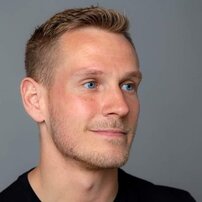 Author: Tobias Simonsen Ambassador & Blogger #TeachSDGs and #iLoveGlobalGoals Board Member #VoresBidrag and #CISUdk Public Diplomacy Manager - Future Leaders #Tunisia_Denmark Twitter: @SimonseTobias By Tobias Simonsen, TeachSDGs Ambassador
For me, nature is fundamental for all living cities, and I believe that nature has a great impact on how we are raising our children and the way we behave to each other. When I walk through Copenhagen, I get a bit worried if we have forgotten where we come from. Clearly stressed, are we using energy drinks and cigarettes, instead of going for a walk at the harbor or run in the forest? I grew up in a house with garden where my mother had to wash my dirty clothes each day. I was allowed to climb the tallest trees, and where my friends’ parents were yelling “Be careful!" my parents had the opinion that if I could get up there, I could also get down again. That meant, that I had to wear long sleeves to cover all my bruises so my teachers did not think I was mistreated at home. Nature is teaching us to take responsibility and that all actions have consequences. Nature has formed my physics. Nature has sent me on so many adventures, and it has given me tools to be curious about the world around me. Today, I see that we are more focused on creating the perfect formula for raising our children to have perfect careers instead of concentrating on the world in which we are part of. And, I know that times are changing with e-sports and social media, but in order to be ready for the challenges ahead is it crucial to be close to our roots. And nature can help us with that. Today, children spend only half as much time in nature as our grandparents did when they were kids. That is a frightening development; did we really reduce our use of nature to bike to work or attend festivals? In nature, there are no winners or losers. There are no defined frames for what is wrong and what is right, and there are no boxes to fit in - which is totally opposite of our increased focus on performance and efficiency, instead of time and respect for individual needs. We are planning our cities in the same way – rigorous and efficient. We are creating green areas by inserting grass and ornamental trees. I believe we must be reminded about our connection to the nature all through our lives. I would therefore love to see fruit trees and wild nature areas in the cities with space for biodiversity as supplement to the grass fields. I have, as an example, learned so much about not breaking the sticks where fruit are supposed to grow on. I dream about a city where we take responsibility for each other -- for each other’s health. Where we meet each other instead of texting each other. A city where we are creating individual humans instead of creating humans to fit certain boxes. There is so much we can learn from nature. Nature is for everybody, regardless if you are biking to work or playing football in the park. Nature is forming us and giving us strength all through our lives. I believe we as educators are playing a fundamental role in giving the beauty and practicalities of the nature on to our students. Therefore dear educator, next time you want an energy drink, please consider going for a walk in the forest instead 😉 By Leigh Cassell, Digital Human Library Digital Human Library and TeachSDGs are proud to announce a new partnership that will unite the seventeen Sustainable Development Goals (SDGs) with new Digital Human Library Experts. Our partnership brings together community organizations and businesses committed to the SDGs, with K-12 teachers and students learning, responding, and acting on the SGDs in their classrooms. These relationships not only bring together education, community and business, but create authentic opportunities for students to learn with the world, not just about it. “This initiative is designed by passionate educators committed to creating global connections for students,” says Leigh Cassell, Founder at Digital Human Library. “The opportunity to build relationships with others around a shared passion and purpose — the SDGs — will help students develop as globally compassionate and competent learners.” Our mission at Digital Human Library (dHL) is to deliver authentic experiential learning opportunities to K-12 teachers and students, and our partnership with TeachSDGs will help us do just that. TeachSDGs be the driving force behind a new Catalogue of dHL Experts who will be available to connect with classes around each sustainable development goal. These relationships will include virtual program offerings, inquiry support, opportunities for Q&A, career talks, mentorships and more! “Imagine students learning about SDG 13: Climate Action and connecting with students marching in the city centre of Brussels to be part of the live Climate Strike experience through live webcam video” says Dr. Jennifer Williams, Co-Founder at TeachSDGs. “Digital Human Library is helping to bring the Global Goals to life for our classrooms — allowing them to take action for and with the world.”
Geography should not be a barrier to great conversations and meaningful experiences for all students. Our partnership will leverage simple and easily available technologies to create global connections for today’s learners so students can experience the world of learning that exists beyond the walls of their classrooms. By creating opportunities for students to learn and build relationships with others, we are inspiring the generation of passionate learners and leaders. We Need Your Help: Please Take Our Survey In order to inform the selection of Experts who will be featured in the dHL TeachSDGs Catalogue, we need your help. Please complete our short survey to inform which SDG Experts we contact to join Digital Human Library. dHL TeachSDGs Survey About Digital Human Library Digital Human Library (dHL) was founded by Leigh Cassell in 2011 to address the urban and rural gap in education by leveraging digital technologies to broaden the K-12 student experience in ways that connect them with new people, places, and ideas from around the world. Digital Human Library creates opportunities for K-12 teachers and students to learn with the world through social innovation projects, interactive 1:1 video conferences with hundreds of Experts, engaging live streamed educational programs from around the world, and the largest collection of educational virtual tours and virtual reality on the web. dHL is a resource that provides teachers and students with unlimited access to learning partnerships and the field trip experience, anytime, anywhere. For more information, please visit the Digital Human Library website About TeachSDGs TeachSDGs is a global organization of volunteer educators looking to change the world. In efforts to reach the 17 United Nations’ Sustainable Development Goals by 2030, thousands and thousands of teachers who have taken the pledge to teach the Global Goals bring lessons of the SDGs to their students in classrooms around the world each day through awareness, advocacy, and action. TeachSDGs was started as a task force of four educators tasked by the United Nations in 2016. Today, in 2019, there are over 30,000 global educators part of the #TeachSDGs conversation. For more information, please visit the TeachSDGs website Contact us if you have any questions, comments or feedback!  By Global Co Lab The future of our world lies in the hands of the younger generations, and they are ready to start taking action to achieve the United Nations Sustainable Development Goals (SDGs) and see a better, healthier world. That is why the Global Co Lab Network is now partnering with TeachSDGs to mobilize students and teachers around the world to work together to become global changemakers. Our Organization The Global Co Lab Network is a “do-tank” organization that brings generations together to exchange ideas on global change. Through carefully designed Co Labs, or small living room gatherings, we have engaged hundreds of teens, millennials, and adults in collaborative thinking on how to take action on issues facing our world. One outcome of these Co Labs was Teens Dream, a project that has now reached teens in over 40 countries. Teens Dream holds an annual video competition, where teens create a two-minute video based on their dreams on how to achieve the SDGs. Winners of the competition are flown into D.C. each year and are connected to adult mentors with expertise in their field of interest. We then engage the teens in our Dream Hubs, which are virtual rooms focused on a specific SDG. The Dream Hubs connect youth around the world to develop specific action plans to make progress on that SDG. So far, we have six Dream Hubs up and running, focused on SDG 2-Zero Hunger, SDG 3-Good Health & Well-Being, SDG 4-Quality Education, SDG 5-Gender Equality, SDG 12-Responsible Production & Consumption, and SDG 17-Partnerships for the Goals (focused on using art to promote SDG action).
These Dream Hubs are led by Teen Ambassadors, who receive support and guidance from their adult mentors. They hold regular virtual meetings that allow interested teens from anywhere in the world to join in, share their ideas, and start taking action. We advertise these meetings on our Teens Dream Co Lab Facebook and Instagram sites. We will soon be unveiling a new incentives program that allows teens to earn points as they participate. By joining in meetings, recruiting friends, and taking action, they can move up through various levels and eventually earn the title of Global Co Lab Innovator and receive a certificate of participation that can go on their resumes or help with college admissions. Working with TeachSDGs We are excited by the enormous potential of our new partnership with TeachSDGs. Our Dream Hubs are ready to be populated by youth that are passionate and eager to start making a change in the world. The more students that join in our meetings, the greater the impact we can make on SDG progress. We are creating an important network that will not only produce action plans, but also connect young people to the mentors and resources that they need to strengthen their leadership skills and propel their future careers. We aim to give these teens an outlet to let their voices be heard and to turn their incredible ideas into tangible outcomes. Our Dream Hubs also offer a great opportunity for interested teachers and adults working in these fields to become mentors for our teens. Our virtual platform allows for international and intergenerational connections that can be sustained long-term. We are seeking adults of all ages that can provide guidance and assistance, but are willing to step back and let the teens take the lead. Merging our existing network with TeachSDGs’ is a perfect formula to connect young people to teachers that are ready to provide the stepping stones students need to start making their dreams a reality. So far, Teens Dream has seen inspiring successes. Our Gender Equality Dream Hub team created the International Movement for Resilience, Authenticity, & Activism (IMRAA), a female empowerment organization that has been implemented in several schools in the United States and Ghana. Our Good Health & Well-Being Dream Hub has started the first Our Minds Matter mental health awareness club on the West Coast and is working to inspire teens globally to start these clubs in schools. Our Partnerships for the Goals Dream Hub produced an hour-long art show on gun violence called Triggered, which brought together teen artists from all over the world. Our Quality Education Dream Hub led by teens from Romania, Indonesia and Trinidad are interested in how to make education more accessible and interesting. They are in need of adult mentors! There are many more stories like these in progress, and by connecting Teens Dream with TeachSDGs, there is unlimited potential to what can be achieved. Join the Movement The Global Co Lab welcomes you to join our network and help us engage teens worldwide in SDG action. Please visit our Teens Dream website for more information and follow us on social media. You can email [email protected] for more information. How can you get involved?:
Partnership announcement on the Global Co Lab website. Dear Greta,
First and foremost, I wish to thank you. Thank you for bravely taking your solitary stand in August. Thank you for speaking so boldly to the rich and the powerful. And, above all, thank you for inspiring millions of young people to #climatestrike alongside you. With my own students you have been held up as an example of what youth can accomplish when they raise their voices. I have even suggested that you are, at this moment, the single most important person in the world. Many – including you – may disagree with that statement, but please allow me to make the case for those who don’t yet know what we do. Climate change is not just about worsening fires, storms and floods that seize the headlines on a daily basis. It is also about the growing number of children who spend their days pursuing water instead of education. It is about drought and malnutrition and starvation – mostly in parts of the world that are least responsible for our thickening atmosphere. It is about the “tipping point” when melting ice will release more methane than even a zero-carbon Earth can handle. It is about the scientific consensus that we are only about a decade away from crossing this line. Despite these facts some politicians, parents, and power brokers are telling you and your followers to return to your Friday classes. To pursue change from there. To allow the “more knowledgeable” adults to continue doing their work. Some are worried about you. Some are anxious about their jobs or their stocks. Some are willfully blind to the realities of climate change. Some are scared. But they all have one thing in common: They’re all wrong. Confronting injustice has long involved bold breaks from the status quo – including the breaking of rules. Your detractors, for various reasons, seek to moderate your anger and shrink your sense of personal power. Thankfully, you and the approximately 1.5 million allies who just commanded the Ides of March seem to understand your true strength and authority. And you all have every right to be furious. I want you to know that the vast majority of educators are on your side. To teachers everywhere I wish to acknowledge the difficult position we occupy. Entrusted with children from families of all political stripes, we are expected to separate our ideologies from our instruction. While some accuse us of indoctrinating students, others will criticize us for being unsupportive. When making your own decisions, I urge you to consider climate change action not as an ideology, but as a moral imperative that speaks to the deepest levels of common humanity. Our students also find themselves divided. One group will die from climate change, one will fight in their names, and one will be marginally better at graphing and documenting the history of this crucial moment because they missed less class time. We, the educators, should want the second group to be larger than the third. This does not mean that we have to organize weekly strikes; our students are doing that on their own. Some, however, will look to our faces when considering whether to participate in #FridaysForFuture. Freedom of Expression allows us to smile. Our consciences want us to dance. Our school mission statements encourage us to teach citizenship and activism. Tens of thousands of scientists and political leaders have signed letters in support of this movement. And the United Nations Sustainable Development Goals, signed by every country on Earth, supersede restrictive curricula. So, yes, you can teach about climate change in any subject area. Still, some voices will seek to silence us, too. Some voices will call for threats or punishments to students and teachers alike. But to educators reading this, please know that you can be the other voices in any setting. You can echo Greta Thunberg’s assertiveness and bravery. You, Greta, have no doubt heard teachers say that young people can change the world. Like most adults, we love to say this. In this hypocrisy vs. heroism moment, please know that your teachers are immensely proud of you. So are the 30,000+ educators who drive the global #TeachSDGs movement. We stand united behind you. And we will encourage more of our colleagues to do the same. Thank you again. And congratulations on the Peace Prize nomination. Ada McKim is a co-founder of @TeachSDGs and a Canadian teacher of World Issues and Law. |
AuthorSTeachSDGs Team & Contributors Archives
November 2019
Categories |
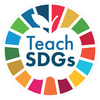

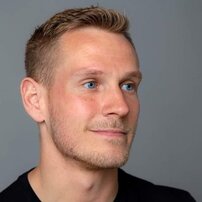
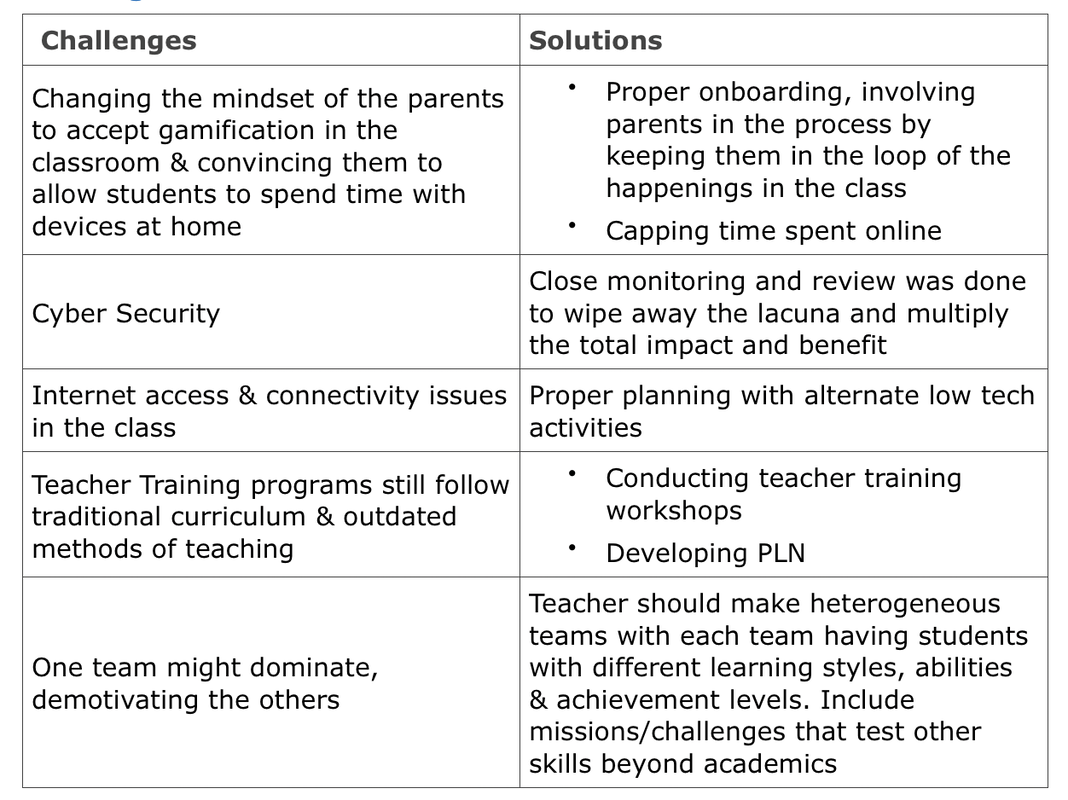

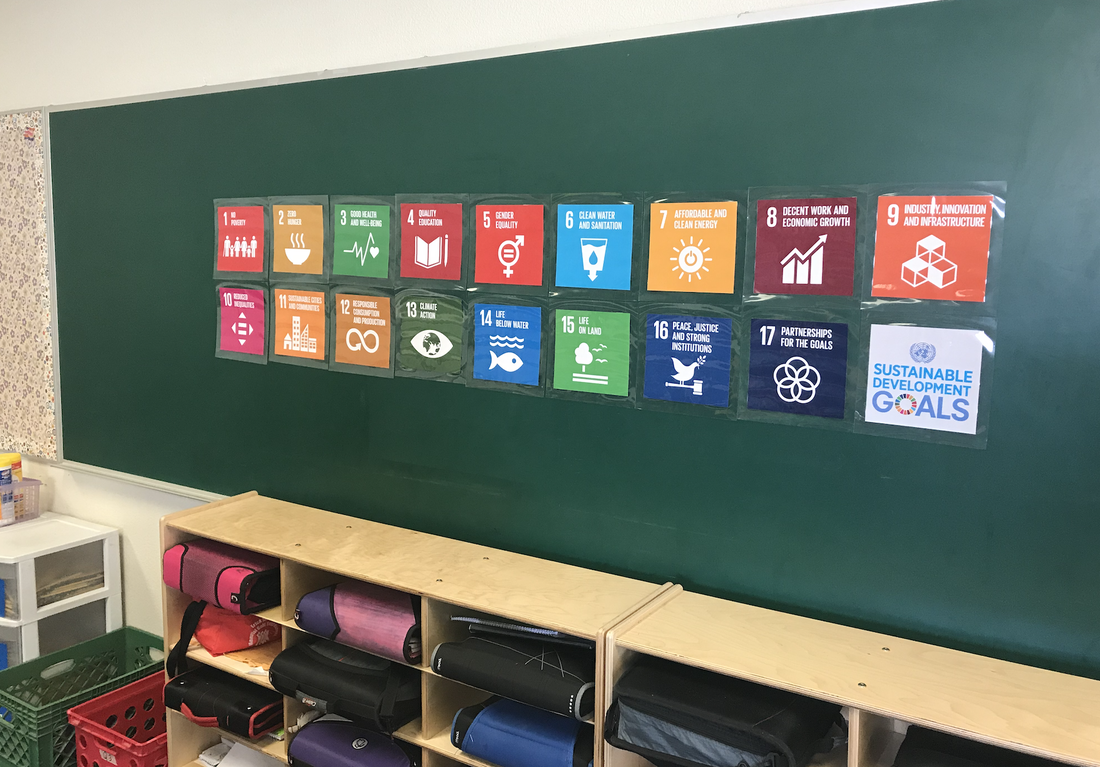


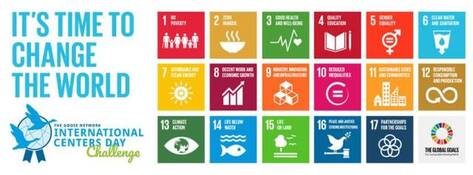
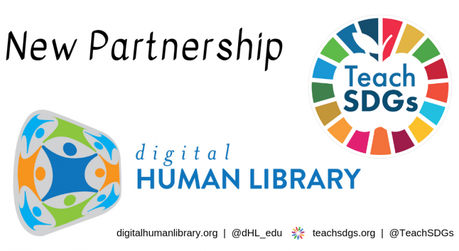
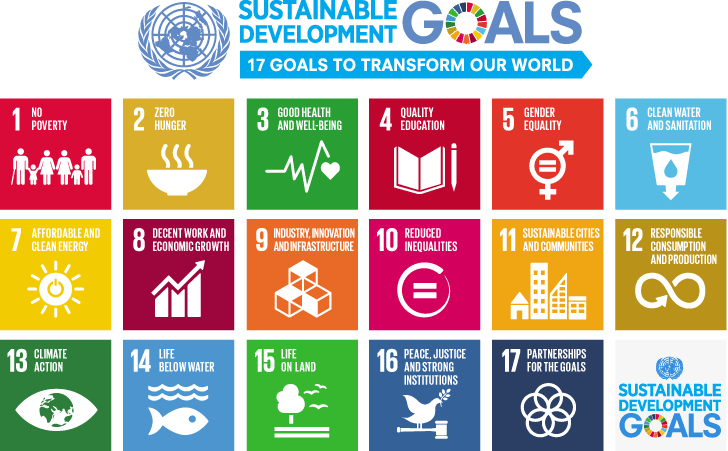

 RSS Feed
RSS Feed